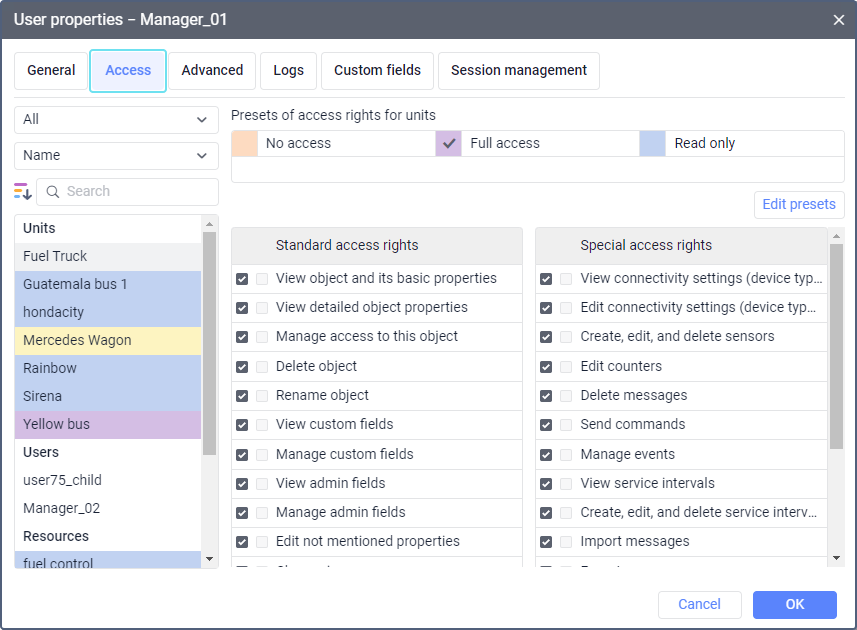Access Rights
An access right is the ability to see certain system objects and perform allowed actions with them. Wialon users may have access rights to the following macro-objects of the system:
- accounts and resources;
- users;
- units;
- unit groups;
- routes.
Access rights may be granted to the users of all types of accounts and at any level of the hierarchy. As a rule, a higher-level user gives access rights to a lower-level one. You can grant or limit access rights on the Access tab in the properties of the user or of the macro-object to which the user should receive the rights. Read more about this process and its particularities here.

Access rights are divided into standard and special ones.
Standard rights are access rights related to the actions the user can perform with all macro-objects. There are 16 such rights in the system, for example: View object and its basic properties, Manage access to this object, Delete object, and so on.
Special rights are access rights which are typical only for a certain type of macro-objects. For example, users may have the Create, edit and delete service intervals access right to a unit, the Act on behalf of this user right to another user, the Create, edit and delete geofences right to a resource, and so on.
For more information about standard and special access rights to different types of macro-objects, see the following pages: